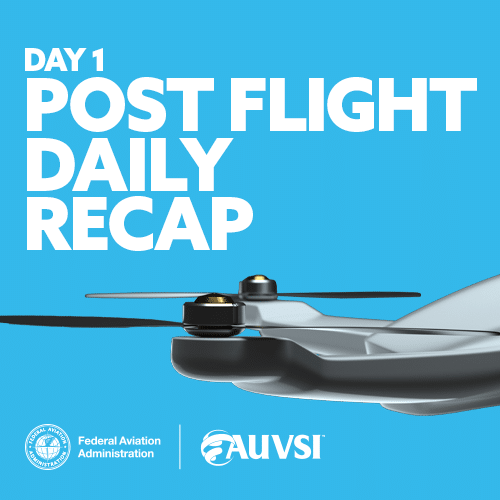FAA UAS Symposium: Episode III, Day One Recap
June 9, 2021

Today, the Federal Aviation Administration (FAA) AUVSI hosted Episode III of the UAS Symposium – Remotely Piloted Edition. Attendees heard from a range of experts about topics relevant to the unmanned aerial systems (UAS) community and the future of drone operations.
Keynote: FAA Administrator Steve Dickson Announces ARC

FAA Administrator Steve Dickson shared his vision for the next phase of drone integration into the national airspace and announced the formation of a new aviation rulemaking committee (ARC) to develop a regulatory path for routine beyond visual line of sight (BVLOS) operations. The committee will consider security needs as well as the societal benefits of complex drone operations, like routine package delivery and infrastructure inspections. Read a transcript of the Administrator’s remarks here.
International Sessions: Identifying Challenges and Opportunities
During the first international session, representatives from the U.S. FAA, Federal Office of Civil Aviation (Swiss FOCA), E.U. Directorate-General for Mobility and Transport (DG MOVE), and Dirección General de Aviación Civil (DCAC) of Spain discussed Europe’s UAS Traffic Management system, known as U-Space.
European panelists highlighted the value of cross-national, cross-system, and cross-domain collaboration. By sharing best practices and maintaining open dialogue with all stakeholders, regulators can build public trust and promulgate regulations that support safety and enable technology to evolve.
Later, representatives from the Civil Aviation Authority of Singapore, Ministry of Land, Infrastructure and Transport (MOLIT) of Korea, and Civil Aviation Safety Authority of Australia discussed UAS integration in the Asia-Pacific region.
June Park from MOLIT discussed the challenges Korea faces with congestion and pollution in street traffic and how urban air mobility (UAM) that is connected to other forms of transportation can provide a solution. The Republic of Korea is working to advance UAM by developing regulations for safety, strengthening private sector research and development, educating the public to improve acceptance, and supporting the construction of needed infrastructure.
Kah Han Tan from the Civil Aviation Authority of Singapore discussed the challenges the nation faces with highly congested airspace and how they are working to resolve these issues through a whole-of-government approach. His agency is working to advance progressive policies and regulations based on risk and performance in order to identify existing use cases for UAS, develop capabilities for future uses, and provide space for innovation and development.
STEM Sessions: Inspiring Tomorrow’s Pilots
Representatives from industry, government, and academia discussed how stakeholders can prepare the students of today for the UAS workforce needs of tomorrow.
Panelists emphasized the importance of taking an active approach to reach communities that have not typically been involved in aviation spaces. The unmanned systems industry should collaborate to ensure that communities are inclusive for all and that all are able to benefit from the value drones can provide. Panelists also highlighted how industry leaders can be a good partner to local communities by helping educators access UAS resources and demonstrating to the public how drones can be used to supplement humans’ capabilities and knowledge.
Commercial Operations Sessions: Realizing the Full Potential of UAS
The recent finalization of FAA’s rule enabling routine operations over people and at night without needing a Part 107 waiver is an important step towards integrating drones into the national airspace. Representatives from FAA and the Pilot Institute discussed the impact of the new nighttime rule on the bright future of commercial drone operations. Panelists noted that commercial drone pilots should be aware that new questions have been added to the exam and to review all new regulations to ensure they are fully compliant. Read more about the rule here.
Public Safety Sessions: Drones For Good
One of the most recognizable local uses of UAS today is in public safety departments. During a session on firefighting and drones, panelists from the Fire Department of New York, Woodland Fire Department, and Los Angeles Fire Department agreed that drone use has expanded their capabilities, helped keep their force out of harm’s way, and saved lives.
Panelists emphasized that for a public safety department’s drone program to be successful, departments must take the training and safety of their drone capabilities just as seriously as traditional manned aircraft capabilities. Departments should also make a concerted effort to educate the public and support transparency to maintain trust and deliver positive outcomes.
- Industry News


